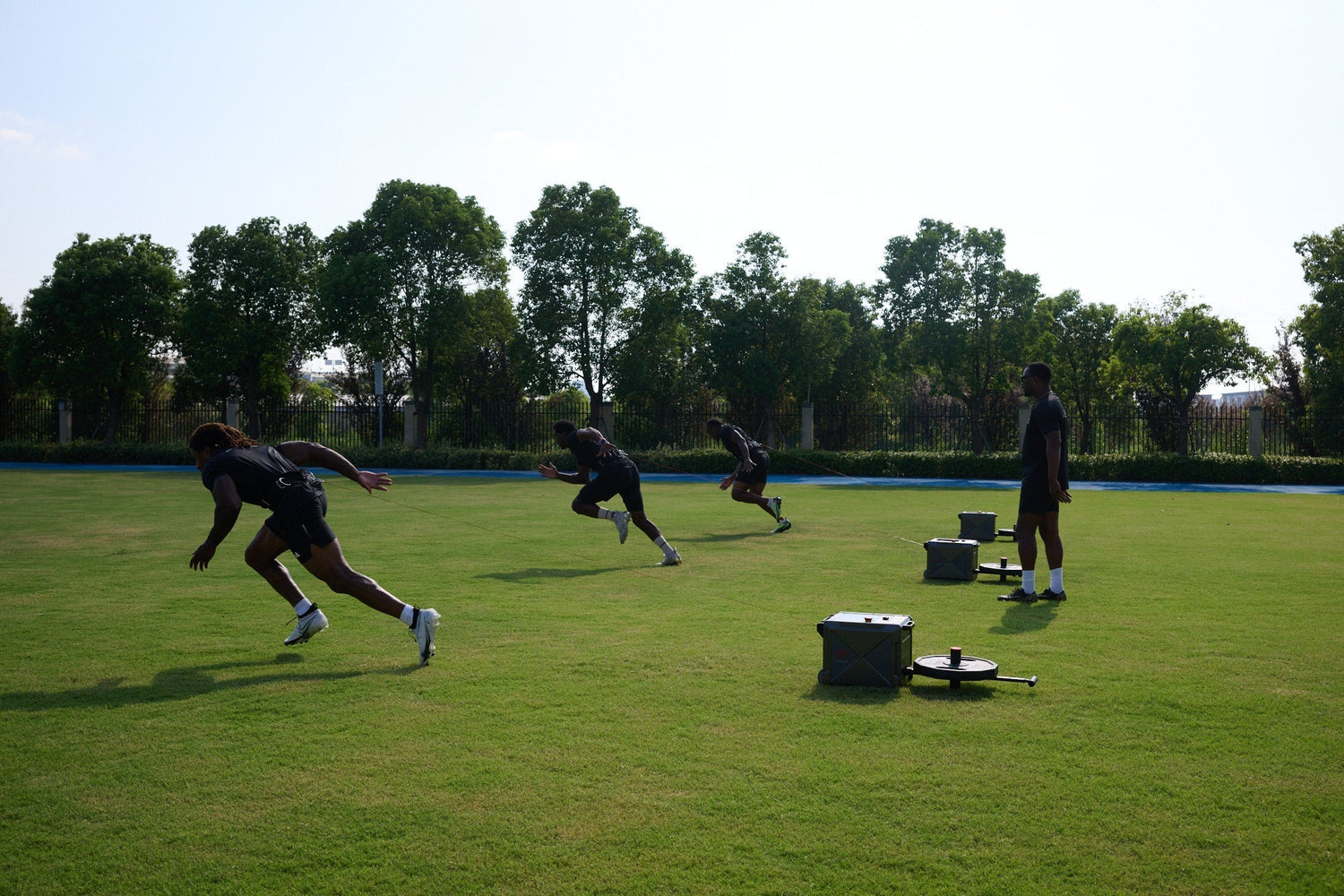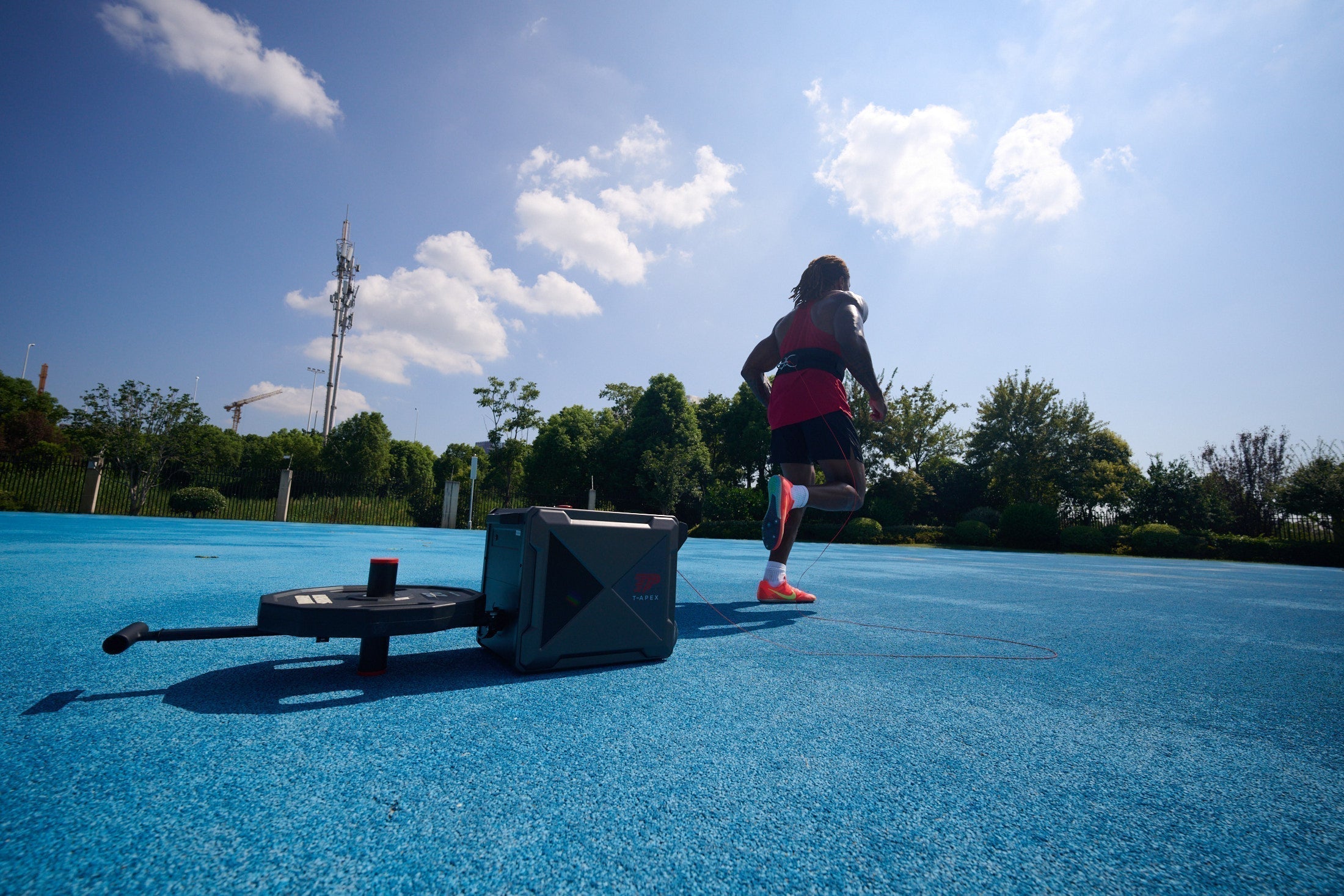Track and field may look like separate worlds—sprints, hurdles, jumps—but the foundations overlap: explosive power, top speed, eccentric control, rhythm, and the resilience to train week after week. T-APEX brings those needs together. With adjustable resistance/assistance and live feedback, it turns general drills into targeted work that actually moves the needle.
Building Explosiveness: Owning the Start
Opening strides set the tone for the entire run. If shin angle and foot strike push you up instead of forward, you leak force and invite hamstring trouble. In Resistance Mode, T-APEX adds controlled drag so athletes must drive back and down, not bounce vertically.

Three quick drills:
- Mountain Climber Start — Rapid leg switches (3–4) against resistance sharpen ground contact, then sprint out.
- Bounce Start — Two or three light, rhythmic bounces load the feet under resistance; drive out from that tension for a stronger first stride.
- Kneeling Jump to Split Start — Rise from the ground, hit a split stance, and accelerate immediately against resistance to train projection from a static position.
Together they teach faster exchanges, better loading, and a harder launch.

Speed: Training Beyond Limits
Top speed isn’t about “trying harder.” The nervous system has to accept faster rhythms and shorter ground contact. In Overspeed Mode, T-APEX gives a gentle pull so athletes touch velocities they don’t usually reach. The first reps can feel awkward—legs rushing to keep up—but that stress is where adaptation starts. After a few sessions, stride rate cleans up and the run feels smoother. Add wickets (mini hurdles) to protect mechanics so the extra pace doesn’t come at the cost of form.
Mastering Eccentric Control
Great jumps depend as much on landing control as on take-off. Eccentric strength lets athletes absorb force and reload it. T-APEX helps here by tracking braking loads during landings—use it with drop jumps or bounds to see whether impact is being handled efficiently. Clean absorption protects knees and Achilles and sets up a more powerful next step, whether that’s a take-off or the transition out of a hurdle.
Enhancing Rhythm and Agility
Ask any hurdler or triple jumper: rhythm holds everything together. It keeps patterns consistent and mistakes small when fatigue creeps in. With light resistance on change-of-direction runs or hurdle approaches, athletes have to keep timing and balance under stress. Shuttle runs, cone weaves, and hurdle exchanges become rhythm sessions as much as conditioning, tightening the link between speed and control.

Recovery and Resilience
Most setbacks aren’t freak accidents—they build quietly when deceleration is poor or the same joints take the same hit every day. Beyond speed and acceleration, T-APEX can flag braking load, stride control, and early signs of over-reaching. Catching those patterns means coaches can adjust volume or exercise choice before tired legs turn into time off. That’s how you keep training steady across a season.
A Complete Training Example
A compact session might look like this:
- Sprint starts with light resistance → sharpen horizontal force.
- Overspeed flying sprints → nudge stride frequency higher.
- Drop jumps or bounds → reinforce force absorption and return.
- COD shuttle runs under variable load → rhythm and agility under fatigue.
Every segment is measurable; weak links are visible and addressable.

Smarter Training, Real Results
Across events, the needs are the same: explosiveness, speed, control, rhythm, and durability. T-APEX helps refine each in real time so athletes leave sessions with faster starts, cleaner top speed, stronger landings, and fewer interruptions from injuries. In short: less guesswork, more progress.


